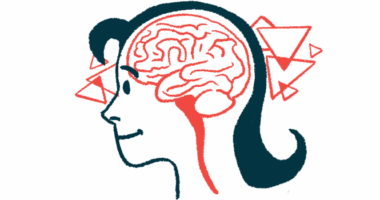
Types of Ehlers-Danlos Syndrome
Arthrochalasia EDS
Arthrochalasia Ehlers-Danlos syndrome is characterized by frequent hip dislocations, in addition to the more common EDS-associated symptom of hypermobile joints. This type of EDS is caused by mutations in the COL1A1 or COL1A2 gene that carry instructions to make the amino acid chains that make type 1 collagen.
Brittle Cornea Syndrome
Brittle cornea syndrome is characterized by the thinning of the cornea, the protective outer layer of the eye. This makes the cornea fragile and prone to ruptures, and may ultimately lead to blindness. This type is caused by mutations in either one of two genes: ZNF469 and PRDM5.
Cardiac-Valvular EDS
Cardiac-valvular EDS, a rare type of the disease, is characterized by problems in the heart valves, as well as stretchy skin or overly flexible joints. It is caused by a mutation in the COL1A2 gene, which carries the instruction to make the pro-α2(1), one of the components of type 1 collagen.
Classical EDS
Classical EDS is characterized by skin hyperextensibility, atrophic or indented scars, and joint hypermobility. This type of the disease is usually caused by mutations in either the COL5A1 or COL5A2 gene, or in rare cases, the COL1A1 gene.
Classical-like EDS
The symptoms of classical-like EDS are very similar to those of classical EDS, but this disease is caused by mutations in the TNXB gene. Patients with this form may experience hernias, where internal organs like the stomach or intestines protrude through the muscle wall that usually contain it.
Dermatosparaxis EDS
Dermatosparaxis EDS is mainly characterized by soft doughy skin that is very fragile, as well as hernias and joint hypermobility. It is caused by mutations in the ADAMTS2 gene, which provides instructions for an enzyme involved in making collagen. This type is extremely rare.
Hypermobile EDS
Hypermobile EDS is the most common type of the disease. It is characterized by symptoms such as soft, smooth, and fragile skin, hypermobile joints, frequent joint dislocations, scoliosis, and osteoarthritis. Genetic mutations have not been identified in most cases of this type.
Kyphoscoliotic EDS
Kyphoscoliotic Ehlers-Danlos syndrome is characterized by kyphoscoliosis, a sideways curvature of the spine in combination with a hunched back. It is caused by mutations in the PLOD1 gene, and in rarer cases, the FKBP14 gene.
Musculocontractural EDS
In musculocontractural EDS, also sometimes called adducted thumb and clubfoot syndrome, patients are born with adducted thumbs — where the thumb is twisted so it lies across the palm — and clubfoot. It is caused by mutations in the CHST14 gene. This type is very rare.
Myopathic EDS
Myopathic EDS is caused by mutations in the COL12A1 gene that provides instructions for making type 12 collagen. Hallmark symptoms are muscle weakness in early childhood associated with large contractures of the knee, hip, and elbow joints.
Periodontal EDS
Periodontal EDS, also known as EDS type 8, is the rarest form of the disease. It is characterized by periodontitis (serious gum inflammation), which eventually leads to the loss of teeth. Periodontitis in patients with this type has an early onset, appearing in puberty.
Spondylodysplastic EDS
The major symptomatic features of spondylodysplastic EDS include short stature, decreased muscle tone, and bowing of limbs. It is caused by mutations in the B4GALT7, B3GALT6, or SLC39A13 genes.
Vascular EDS
Vascular EDS is characterized by thin, translucent skin that is easily bruised, and fragile arteries, muscles, and internal organs. It typically is caused by mutations in the COL3A1 gene.




